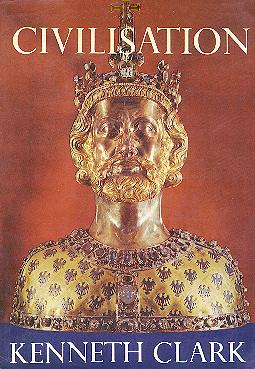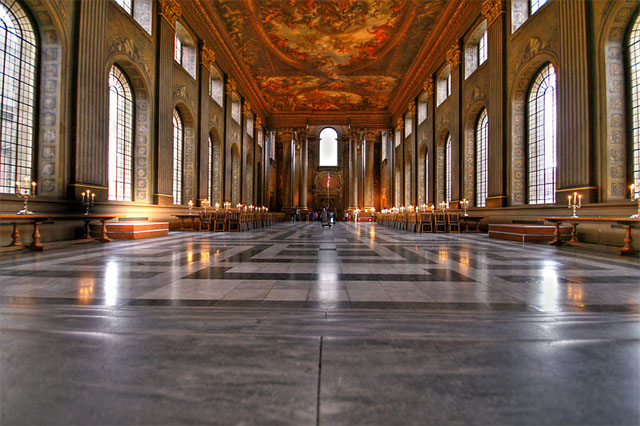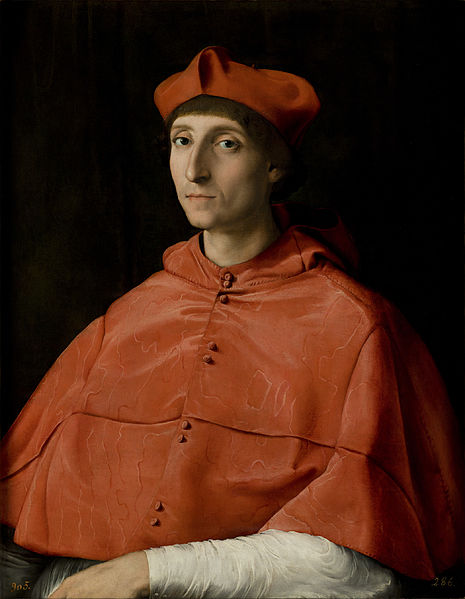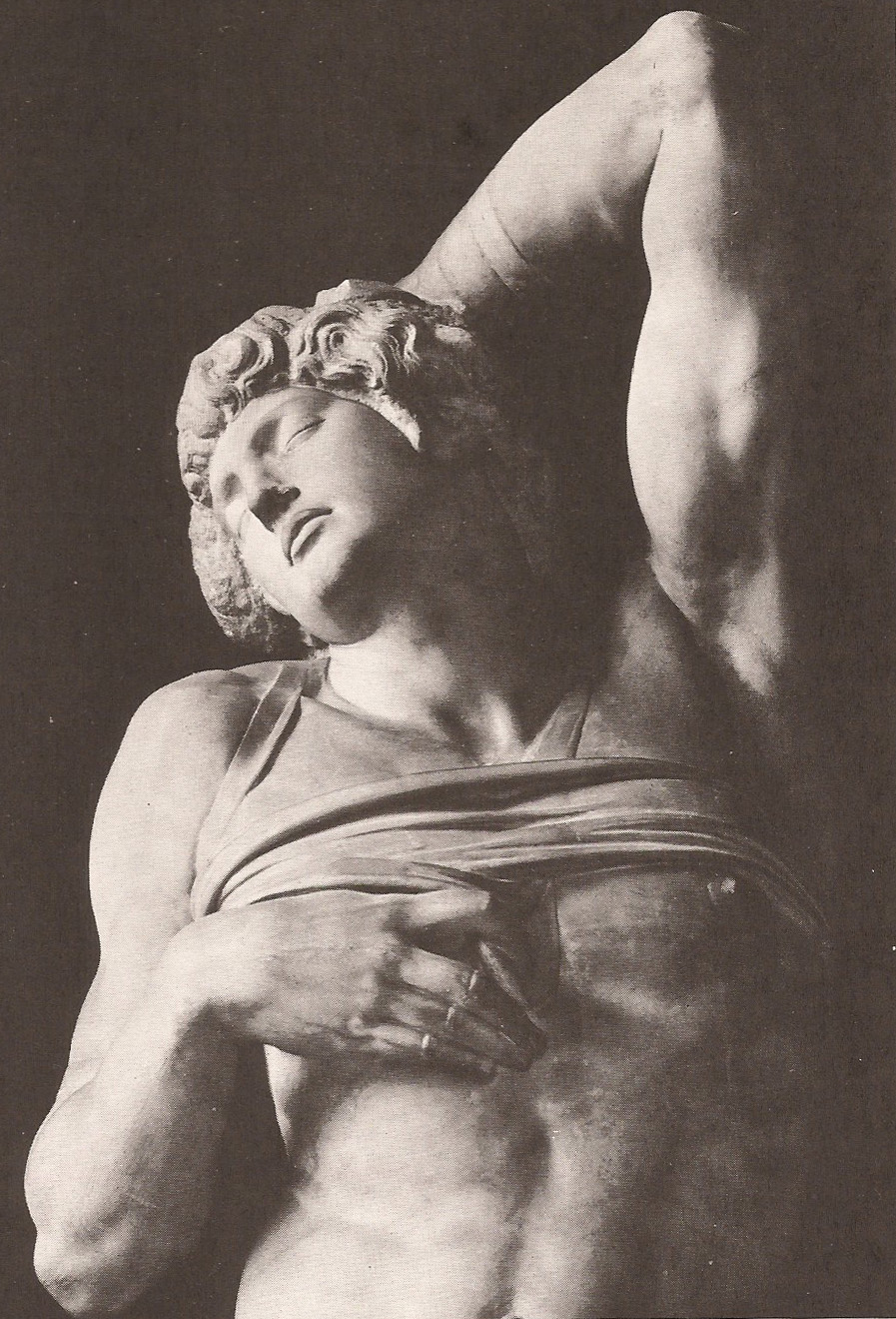Most of the television series I have been watching for critical review contain subtle and not so subtle anti-white propaganda. In a search to counter such traitorous series of the present century I also watched Teresa de Jesús, a mini-series premiered on Spanish television in 1984 that present the life of Spain’s great saint. Its dialogue is in Spanish but versions with English subtitles are available.
Teresa of Ávila (1515-1582) was a nun of the Catholic Church, a Spanish mystic and writer, and the founder of the Discalced Carmelites: a branch of the Order of Our Lady of Mount Carmel (or Carmelites). What struck me the most in the series is that many of the characters don’t look white at all, and in contrast with the obvious treason that I recounted in my previous post on The Hollow Crown the intention of the creators of the series was obviously different. The characters simply reflect the fact that many Spaniards are not real whites or Aryans.
See the important entry linked on the sidebar, “On anti-Nordicism.” If you want specifics about why most Spaniards are not pure Indo-Europeans let me say that the original Iberians, or iberos as we say in Spanish, men of the Aryan race, migrated from the Black Sea basin and went all over Europe up to the British isles, leaving a substantial proportion of people in the Iberian Peninsula which absorbed the previous inhabitants. Fifteen centuries before the Christian Era the Phoenicians and the Aryan Greeks (see the recent entries in this blog under the title, “Were the Greeks blond and blue-eyed?”) founded many colonies in the southern coastline, and with time merged with the original Iberians.
Six centuries before the Christian Era the Celts arrived, who also were Aryan, and fought with the residents of those lands but with time the Celts also mixed with them, giving birth to the Celtiberians. In the 6th century the Carthaginians (white Mediterraneans mixed with Semites) took over Cadiz and established some colonies. In 205 B.C. they were defeated by the Romans during the Third Punic War and expelled from the peninsula.
By that time the ethnic elements of the interbred peoples in the Iberian Peninsula were: autochthonous peoples (of unknown ethnic group?), iberos (Aryan Iberians), Aryan Celts, Phoenicians (half-bloods?), Aryan Greeks, and Carthaginians (half-bloods), producing a culture founded on the will of Celtiberians. In the first centuries of the Christian Era the peninsula would suffer further invasions from the Vandals, the Huns (non whites!), the Alans, and finally the Visigoths or Goths who proceeded from the occidental region of the Dniester River. Those were the groups that had arrived to what the Romans called the Hispanias by 409 A.D., when their empire was in the throes of agony.
The fall of the Roman Empire produced a gap in political, cultural and military power that non-whites occupied. From 713 A.D. the Arabs conquered most of the Iberian territory with the exception of the mountainous Asturias, the first Christian state that started the long period known as the Reconquista. Re-conquering the peninsula for the original Europeans would last no less than eight centuries, but this meant eight centuries of miscegenation with Arabs and Semites, both non-whites. The Moor occupation of this part of Europe ended in 1492 with the conquest of Granada by the Catholic Monarchs Isabella and Ferdinand. So many centuries of Muslim domination resulted in the peculiar phenotype of the peoples we see today in Spain, and explain why quite a few of them don’t look like real whites.
It is worth remembering that the mess started before. In the first centuries of our era the Iberian Goths burned at the stake their fellow Aryans that dared to mix their precious blood with non-whites. Alas, the king of Hispania Recceswinth committed the greatest blunder in Iberian history: a blunder still unrecognized by Spanish intellectuals or historians but a gigantic blunder nonetheless. By converting to Christianity Recceswinth abolished the long ban on miscegenation (which reminds me the Spartan ban on miscegenation), which resulted in the subsequent mongrelization of the Visigothic Iberians. The king of Hispania’s decision allowed any person of any racial origin, as long as he professed Christianity, to intermarry with the Aryan Goths. Such failure of the nerve occurred just a few decades before these territories were invaded by the Moors.
It is not surprising to see, after eight centuries of unbeatable miscegenation, the formation of a superstitious culture that eventually would be called Spain. I must confess that the most incisive opinion I have ever read about Spain appears in the foreword to the printed version of Civilisation, the 1969 television series featuring Kenneth Clark:
Some of the most offensive omissions were dictated by my title. If I had been talking about the history of art, it would not have been possible to leave out Spain; but when one asks what Spain has done to enlarge the human mind and pull mankind a few steps up the hill, the answer is less clear. Don Quixote, the Great Saints, the Jesuits in South America? Otherwise she has simply remained Spain, and since I wanted each programme to be concerned with the new developments of the European mind, I could not change my ground and talk about a single country.
But what if even Cervantes, Spain’s great saints and the Jesuits were not so terribly cool from the viewpoint of racial preservation? What if the staunch Catholicism of the Counter-Reformation, which produced Cervantes, the Saints and the Jesuits was uncongenial to white interests? These are the sort of questions that move me to say something about the 1980s’ television series of St. Teresa.
Racial phenotype of the actors aside, what struck me about these series is that its creators depicted Teresa as suffering from a typical hysteria; in her case, to the point of a catatonia she suffered as a young woman. What caused her hysterics will remain unknown, although it is interesting to read her autobiography. A copy in the original language that I have in my bookshelf says that Teresa confessed that she “was the most cherished of my father” (this comes from an English translation), and the very first words of her first chapter are: “I had a father and mother, who were devout and feared God.” Although only a very idealized parental-filial relationship appears in the first paragraphs of Teresa’s autobiography, I suspect that her psychosomatic illness attests to something that she, the so-called expert of the “Interior Castle” (the human soul), never confessed.
Whatever the dynamics of Teresa’s family it is interesting to see that even in these series, televised for a Catholic audience, Teresa is described by her sister nuns as pretending to be “the different one,” as always acting out her sufferings and psychosomatic ills. Some of the nuns interpreted her behavior as a trick to be the bossy of the nuns of the several convents she founded. Even Teresa’s hostile takeover of her original convent from the power of other nuns is depicted, albeit shown as something noble for the cause. As I have said, Teresa de Jesús has as its target group pious Catholics. So much that the (apocryphal in my opinion) story of Teresa’s miraculous levitation while praying is recounted as historical, as well as an instantaneous flourishing of an almond tree at the end of her life (“Everything she touches turns into life”).
Teresa was a religious genius only in the sense that St. Francis was a religious genius too. Both saints basically used theatrics big time to act out their emotional issues and gather large followings; followings that eventually reformed monastic orders. My Catholic father, who insufflated in me a love for St. Francis during my adolescence, was totally wrong in his statement that “the only supermen are the Saints.” I would say that Christianity has no saints in the sense of psychologically integrated, or truly emergent, individuals (William Pierce is what presently I regard as the closest specimen of the archetypal “overman”). In Teresa de Jesús for example the so-called saint is depicted as fairly tolerant about the New Christians, or Conversos with Jewish blood, while other Spaniards of the series are presented as suspicious about those rich merchants of dubious origins. Also, Teresa’s most famous vision in which an angel pierced her heart with a golden spear, in-out in-out delivering the poor woman into an ecstasy, has all the marks of an erotic sublimation in the mind of a celibate nun.
The last episode contains an epilogue describing what happened in this primitive culture after an agonic Teresa died. Hunting for relics fanatic religionists cut her hand, one of her fingers, an arm and an eye, thus mutilating her dead body. It surprised me that the creators of the series described such post-mortem atrocities, some even perpetrated by the dignitaries of the Church, as something sublime and noble.
The reformer of the Carmelite Order was canonized forty years after her death, and in the century when we were born Teresa was even named a “Doctor of the Church” by Pope Paul VI. Here in Mexico I recently visited a property of the Carmelite Order and their wealth impressed me. As I have said elsewhere, as to white interests is concerned Spain’s Counter-Reformation experiment in Europe and the Americas was “an utter disaster”…
























